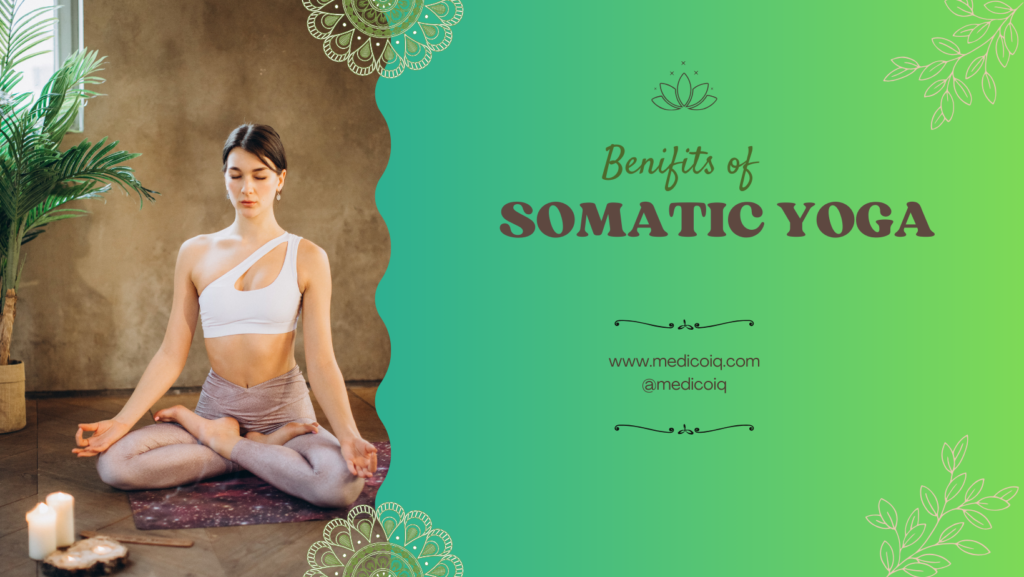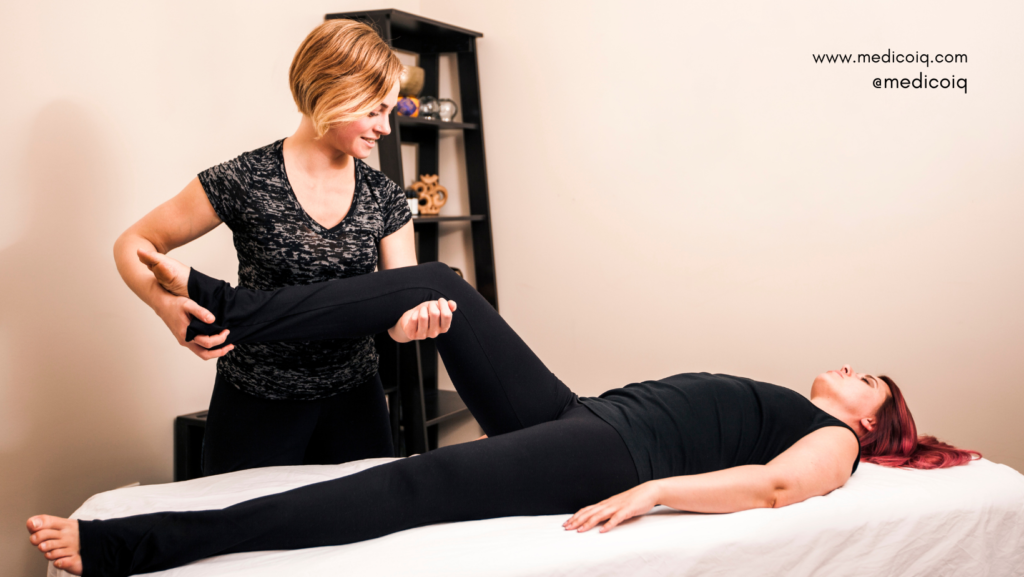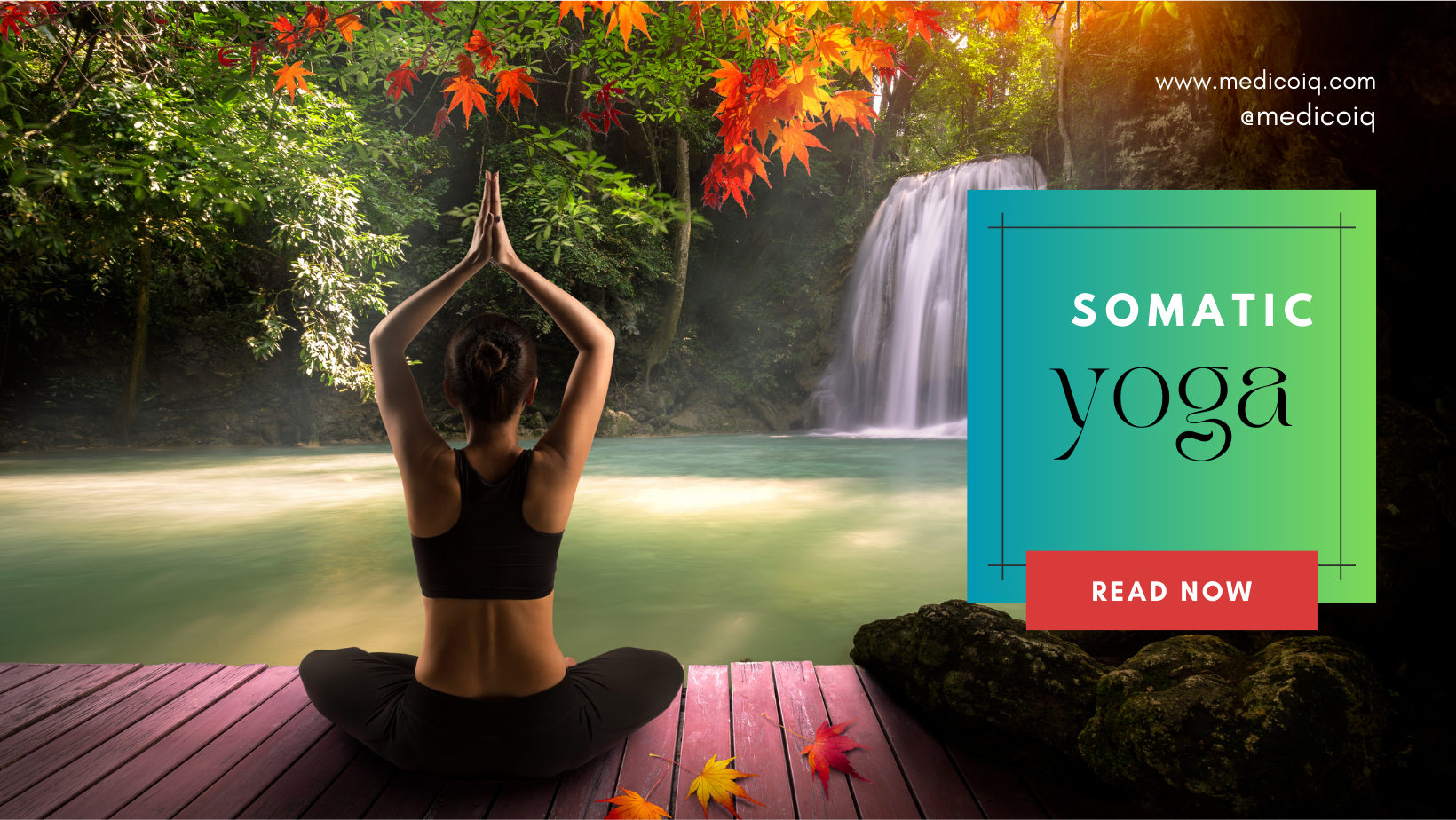Table of Contents
Origin of Somatic Yoga
Somatic Yoga, a holistic approach to wellness, delves deep into the mind-body connection, intertwining movement with mindfulness.
Originating from the Greek word “soma” meaning body, its emphasizes the awareness of internal sensations and fosters a conscious dialogue between the body and the mind.
This practice traces its roots to the teachings of Thomas Hanna, a neuromuscular educator who coined the term “somatics” to describe the integration of sensory and motor functions.
Definition of Somatic Yoga
Somatic Yoga distinguishes itself by prioritizing internal awareness over external performance. It involves gentle, mindful movements that encourage practitioners to release chronic muscle tension, alleviate pain, and enhance overall well-being.
By incorporating principles from various movement modalities, including Feldenkrais and Alexander Techniques, Somatic Yoga provides a unique approach to self-discovery and healing.
As individuals engage in this transformative practice, they cultivate a profound connection with their bodies, paving the way for improved physical and mental health.
Somatic Yoga offers a gateway to inner harmony and a renewed sense of vitality, making it a valuable addition to the diverse landscape of mind-body practices.
Understanding Somatic Yoga
In a fast-paced world, its emerges as a beacon of holistic well-being, intertwining mindful movement, breath, and sensation.
Rooted in the Greek term “soma” for body, its redefines the practice, emphasizing internal awareness and conscious movement.
1.Mindful Movement and Awareness:
Somatic Yoga transcends conventional poses, prioritizing the quality of movement over external performance.
Practitioners are encouraged to move with intention, bringing a heightened awareness to every nuance of their bodily sensations.
By fostering a conscious dialogue between the mind and body, Somatic becomes a transformative journey of self-discovery.
2. Incorporating Breath and Sensation:
At its core, Somatic Yoga recognizes the symbiotic relationship between breath and movement.
The practice intertwines breathwork with intentional, gentle motions, allowing individuals to synchronize their breath with each movement.
This mindful integration enhances the mind-body connection, promoting a sense of calm and presence. The emphasis on sensation further deepens the experience, encouraging practitioners to explore and release stored tension.
Somatic Yoga embodies a harmonious union of breath, movement, and awareness, unlocking the gateway to inner vitality. As practitioners delve into this transformative practice, they embark on a journey that transcends the mat, fostering holistic well-being and a profound connection with the self.
You should know this Essential Guide of Foot Pain Chart
The role of sensory-motor learning in Somatic Yoga
Somatic Yoga, an embodiment practice rooted in sensory-motor learning, elevates the mind-body connection to new heights. At its core, this discipline recognizes that movement is not just a physical act but a sensory experience intertwined with the nervous system.
Through deliberate, mindful movements, its engages the sensory-motor system, promoting heightened awareness of internal sensations.
This unique approach allows practitioners to explore and release deeply held muscular tension, facilitating a profound transformation.
Sensory-motor learning in Somatic Yoga involves re-educating the nervous system to move with greater efficiency and awareness.
As individuals consciously engage in the practice, they develop a nuanced understanding of their body’s signals, leading to improved posture, flexibility, and overall well-being.
Its with its emphasis on sensory-motor learning, becomes a gateway to self-discovery, offering a path towards greater physical harmony and enhanced mind-body integration
Benefits of practicing Somatic Yoga for overall well-being

Mindful Movement in Somatic Yoga
In the realm of its, the essence of mindful movement takes center stage, creating a profound impact on both body and mind.
Guided by gentle and intentional movement sequences, practitioners embark on a journey characterized by deliberate actions and heightened awareness.
Slow, Controlled, and Mindful Actions:
Somatic Yoga embraces a deliberate pace, allowing individuals to engage in movements that are intentionally slow and controlled.
This deliberate tempo enables a heightened connection with the body, encouraging a conscious exploration of each nuanced sensation.
The deliberate pace of its transcends the hurried nature of daily life, offering a sanctuary for practitioners to immerse themselves in the present moment.
Focusing on the Quality of Movement over Quantity:
Unlike conventional fitness routines, Somatic Yoga emphasizes the quality of movement rather than quantity.
Practitioners are encouraged to delve into each movement with a mindful focus, fostering a deeper understanding of their body’s capabilities.
By prioritizing quality over quantity, Somatic Yoga becomes a practice of self-discovery, allowing individuals to refine their movements and cultivate a profound mind-body connection.
In the serene realm of its, mindful movement becomes a meditative exploration, transcending the physical to nurture a holistic sense of well-being.
As practitioners engage in intentional actions, they discover the transformative power of mindfulness, unlocking a path to greater vitality and self-awareness.
Somatic Yoga, a sanctuary of mindful movement, beckons practitioners to embrace the transformative dance between breath and motion.
In this sacred practice, the integration of breath awareness into each movement becomes an art form, enhancing both the physical and spiritual dimensions.
Synchronizing Breath with Movement:
At the heart of Somatic Yoga lies the elegant synchronization of breath with deliberate movement.
Each inhale and exhale aligns seamlessly with the ebb and flow of postures, creating a harmonious rhythm that deepens the mind-body connection.
This conscious pairing not only imparts grace to the practice but also invites a heightened state of awareness, transforming the session into a meditative journey.

Enhancing Relaxation and Presence through Mindful Breathing:
Mindful breathing becomes a guiding force in Somatic Yoga, extending beyond mere respiration to become a conduit for relaxation and presence.
As breath intertwines with each movement, practitioners unlock a serene mental space. The intentional cadence of mindful breathing serves as a gateway to inner tranquility, fostering a profound sense of presence within the unfolding moment.
In the sacred union of breath and movement, Somatic Yoga unfolds as a holistic practice where practitioners embark on a transformative voyage of self-discovery and serenity.
Through the mindful interplay of breath and motion, Somatic Yoga becomes a sanctuary for cultivating harmony, vitality, and a deeper connection with the self.
Body Scan and Sensation Awareness
Somatic Yoga unveils a transformative journey within by embracing the profound practices of body scanning and sensation awareness. These techniques form the bedrock of this holistic discipline, fostering a deep connection with the self.
1. Bringing Attention to Different Body Parts:
In the tapestry of Somatic Yoga, practitioners embark on a meticulous body scan, directing attention to various body parts.
This intentional focus invites awareness to each region, unraveling hidden tensions and creating a conscious dialogue between the mind and the body.
By systematically exploring the landscape of the body, Somatic Yoga becomes a journey of self-discovery and release.
2. Noticing and Releasing Tension through Awareness:
Somatic Yoga encourages the art of noticing sensations within the body, inviting practitioners to become keen observers of tension.
Through this heightened awareness, individuals not only identify areas of held stress but also learn to release it with mindful intention.
The practice becomes a dynamic process of letting go, allowing the body to unwind and restore its natural state of balance.
In the sanctuary of Somatic Yoga, the techniques of body scanning and sensation awareness weave together, offering a pathway to physical and mental well-being.
As practitioners delve into the intricacies of their being, they uncover the transformative power of mindful attention, paving the way for a harmonious union between body and consciousness.

Developing a deeper connection to bodily sensations
- Encouraging a non-judgmental attitude toward sensations
- Using sensation awareness for emotional release and relaxation
Somatic Yoga unveils a sacred journey of self-discovery through the powerful techniques of body scanning and sensation awareness, fostering a profound connection to the inner self.
1. Encouraging a Non-Judgmental Attitude towards Sensations:
At the heart of Somatic Yoga lies the invitation to explore bodily sensations with a non-judgmental gaze. Practitioners are encouraged to observe sensations without assigning labels of good or bad, creating a space for acceptance and self-compassion.
This approach not only deepens the connection with the body but also promotes a harmonious relationship with one’s own physical experience.
2. Using Sensation Awareness for Emotional Release and Relaxation:
Sensation awareness in Somatic Yoga serves as a gateway to emotional release and relaxation. By tuning into the nuances of sensation, practitioners unlock a reservoir of emotions held within the body.
This heightened awareness becomes a transformative tool, allowing individuals to release emotional tension and achieve a state of profound relaxation. Somatic Yoga becomes a vessel for emotional well-being as practitioners navigate the inner landscape with sensitivity and grace.
In the gentle embrace of Somatic Yoga’s body scan and sensation awareness, individuals cultivate a deeper connection to their physical and emotional realms.
This practice invites a non-judgmental exploration of sensations, fostering emotional release, relaxation, and a harmonious integration of mind and body.
Somatic Yoga Poses and Asanas
In the symphony of Somatic Yoga, the exploration of postures transcends the conventional, inviting practitioners into a realm of gentle stretches and mindful movements.
Gentle Stretches and Movements:
Somatic Yoga postures unfold as a choreography of gentle stretches and deliberate movements.
Unlike traditional yoga, the emphasis is not on achieving a perfect pose but on the quality of movement and the awareness it brings.
These gentle stretches become a medium through which practitioners reconnect with their bodies, fostering a sense of mindfulness and self-discovery.

Adapting Traditional Yoga Poses with a Somatic Approach:
Somatic Yoga gracefully adapts traditional yoga poses, infusing them with a unique somatic approach.
Each pose becomes a canvas for exploration, encouraging practitioners to delve into sensations, release tension, and refine their movements with a heightened sense of awareness.
By intertwining the principles of neuromuscular education, Somatic Yoga offers a transformative experience, paving the way for enhanced flexibility, improved posture, and a harmonious integration of mind and body.
Embarking on the journey of Yoga postures is an invitation to dance with the body, explore movement with intention, and unfold the layers of self-awareness within each pose.
As practitioners gracefully adapt traditional postures, Somatic Yoga becomes a vibrant tapestry where movement and mindfulness converge, creating a holistic symphony of well-being
Breathwork and Relaxation Techniques
Breathwork emerges as a powerful elixir for stress reduction, seamlessly integrated into the practice’s fabric.
Integrating Breathwork for Stress Reduction:
1. Diaphragmatic Breathing in Somatic Yoga: Somatic Yoga harnesses the potency of diaphragmatic breathing, a cornerstone for stress reduction. This intentional breathwork activates the parasympathetic nervous system, promoting relaxation and centering the mind.
2. Breath Awareness as a Tool for Relaxation and Grounding: Beyond mere inhalations and exhalations, breath awareness becomes a profound tool for relaxation and grounding. Practitioners are guided to mindfully observe each breath, fostering a connection to the present moment and a release of tension.
Progressive Relaxation Techniques for Releasing Tension:
1. Guided Relaxation through Different Body Parts: Somatic Yoga invites a journey of progressive relaxation, guiding practitioners through each body part. This gentle exploration releases tension, offering a therapeutic release and a profound sense of ease.
2. Cultivating a Sense of Ease and Comfort in the Body: Progressive relaxation in these yoga culminates in the cultivation of ease and comfort within the body. Through guided techniques, practitioners unlock a serene sanctuary, allowing tension to melt away and fostering a state of blissful tranquility.
In the tapestry of Somatic Yoga, the seamless integration of breathwork and progressive relaxation techniques weaves a holistic experience. In this symphony, each breath becomes a note, leading practitioners to a state of profound relaxation and well-being.
The importance of variation and personalization in Somatic Yoga
- Adapting poses to individual needs and limitations
- Encouraging exploration and self-discovery in each pose
The significance of variation and personalization within poses becomes a guiding principle, offering practitioners a unique and tailored journey.
1. Adapting Poses to Individual Needs and Limitations:
Somatic Yoga stands as a testament to the belief that one size does not fit all. Each pose is an opportunity for adaptation, respecting individual needs and limitations. By embracing this approach, practitioners cultivate a practice that is not only accessible but also mindful of their unique bodies. Somatic Yoga encourages modification, ensuring that each pose serves as a therapeutic expression tailored to the individual.
2. Encouraging Exploration and Self-Discovery in Each Pose:
Beyond mere physical alignment, Somatic Yoga poses become a canvas for exploration and self-discovery.
Practitioners are invited to delve into the nuances of each pose, allowing sensations to guide the experience. This emphasis on mindful exploration fosters a deeper connection with the self, unveiling hidden tensions and paving the way for a more profound mind-body integration.
In the personalized journey of Somatic Yoga poses the practice unfolds as a dynamic, ever-evolving dialogue between the individual and their body.
By adapting poses and encouraging exploration, Somatic Yoga becomes a sacred space for self-discovery, creating a harmonious symphony of well-being that resonates uniquely for each practitioner.
Conclusion
In conclusion, Somatic Yoga, rooted in mindful movement and breath awareness, unveils a transformative path to holistic well-being.
Embracing principles like gentle stretches, breath synchronization, and personalized poses, it becomes a journey of self-discovery and release. I encourage you to explore this practice, adapting poses to your needs and experiencing the therapeutic benefits.
Through Somatic Yoga, cultivate mindful movement, harness the power of breath, and unlock a profound mind-body connection.
As you embark on this voyage, may you discover a sanctuary of holistic wellness, weaving a tapestry of ease, balance, and transformative self-awareness in the rhythm of each movement?
FAQS Of Somatic Yoga
What is Somatic Yoga?
Somatic Yoga is a practice that combines gentle movement with mindfulness techniques to enhance body awareness, release tension, and promote overall well-being.
What are the benefits of Somatic Yoga?
Somatic Yoga offers numerous benefits, including improved flexibility, reduced stress, relief from chronic pain, enhanced relaxation, and greater mind-body connection.
Is Somatic Yoga suitable for beginners?
Yes, Somatic Yoga can be adapted to accommodate practitioners of all levels, including beginners. The practice emphasizes gentle movements and encourages participants to listen to their bodies.
How does Somatic Yoga differ from traditional yoga?
Somatic Yoga focuses more on internal sensations and movement patterns, whereas traditional yoga often emphasizes static postures. Somatic Yoga aims to release muscular tension and promote fluid movement through mindful awareness.
Can Somatic Yoga help with specific health conditions?
Yes, Somatic Yoga has been found to be beneficial for individuals dealing with various health conditions, including chronic pain, musculoskeletal issues, stress-related disorders, and anxiety. However, it’s essential to consult with a healthcare professional before starting any new exercise program, especially if you have underlying health concerns.



